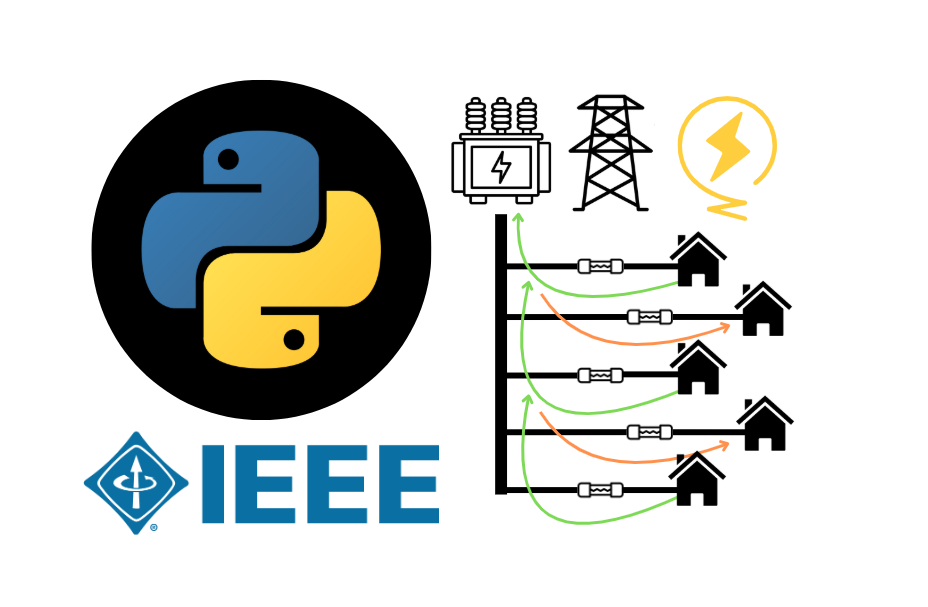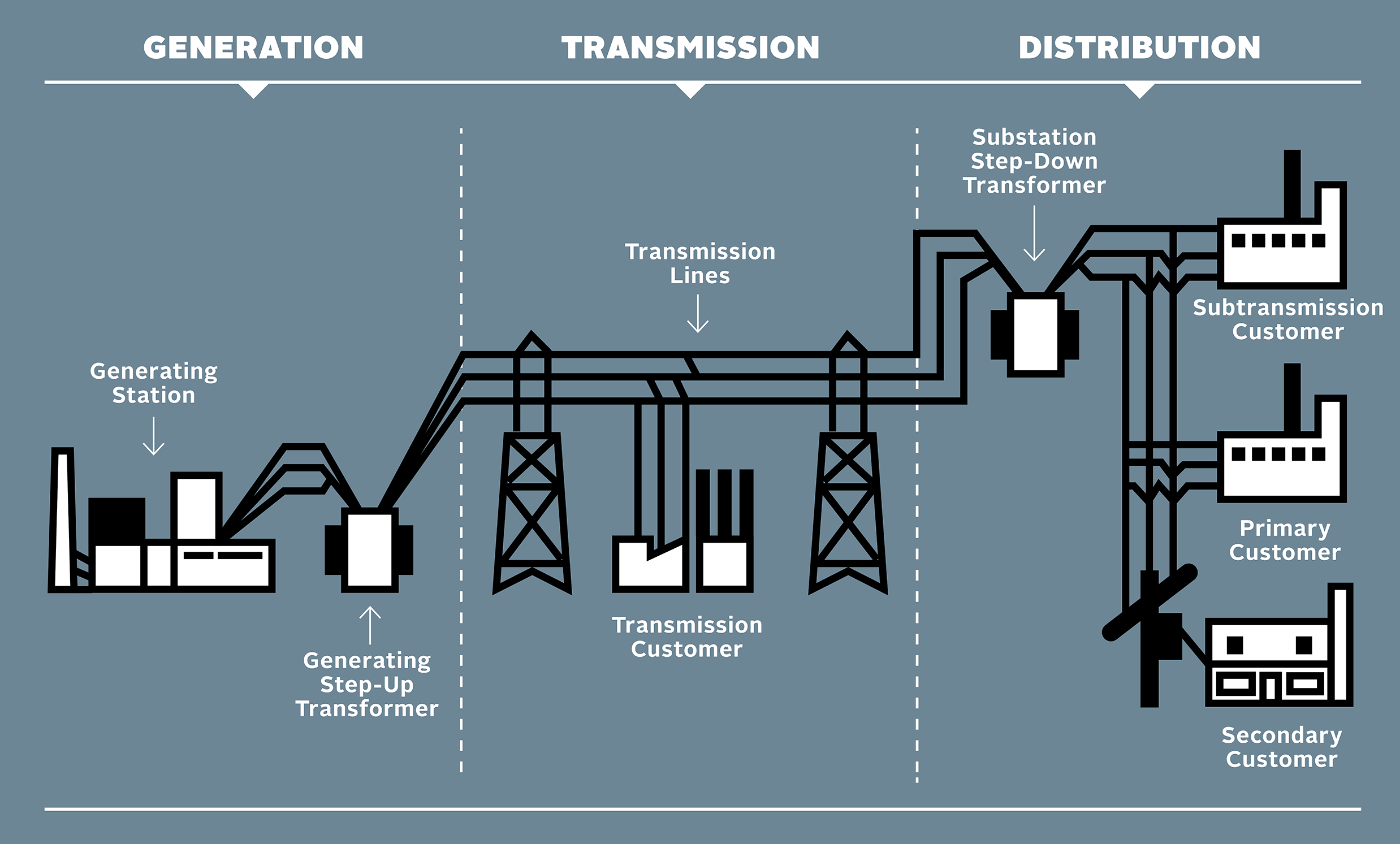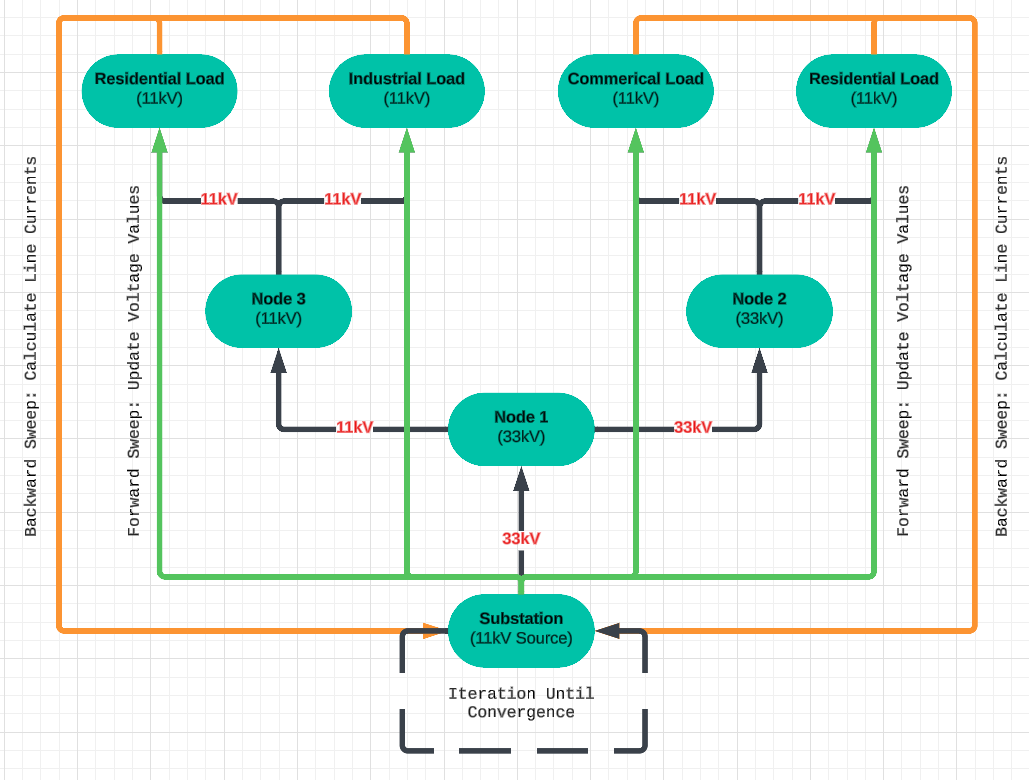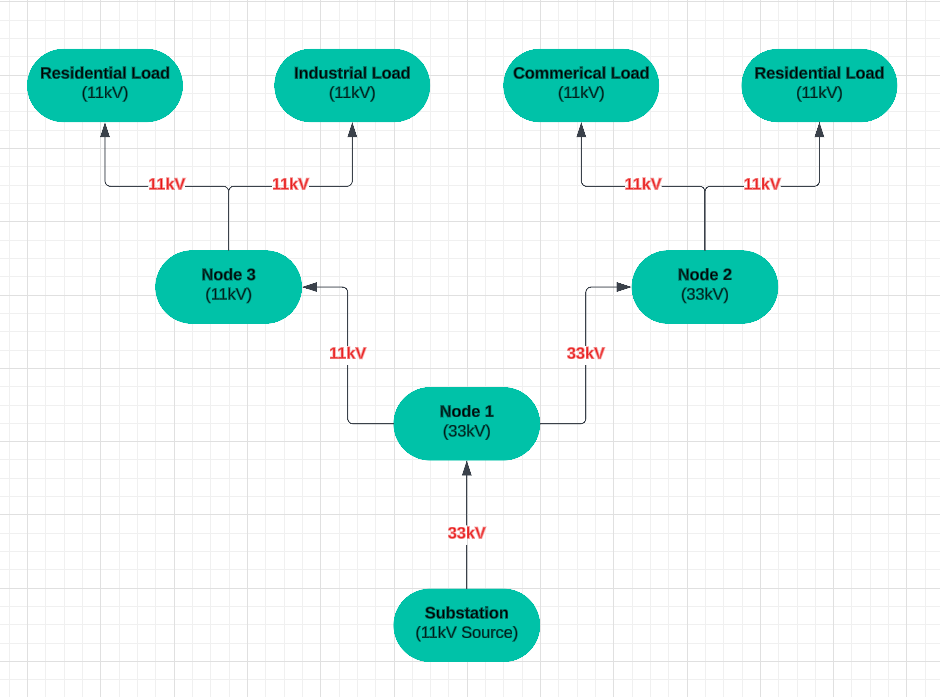Python-Based Ladder Iterative
Load Flow Tool
The Python-Based Ladder Iterative Load Flow Tool addresses critical challenges in radial power distribution networks, including voltage drops and inefficiencies. Designed with engineers and researchers in mind, this tool combines computational accuracy with user-friendly features. By leveraging Python and the Ladder Iterative Method, it facilitates robust grid analysis, ensuring stability, efficiency, and adaptability for modern power systems.

















